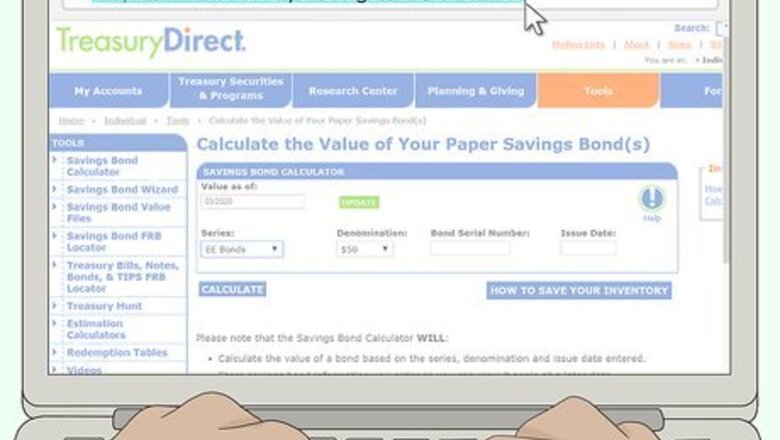
views
- Use the Treasury Direct bond savings calculator to determine the value of any paper bonds you have.
- All electronic savings bonds are hosted on Treasury Direct, the official website of the US Treasury. You can find your bonds’ values there.
- There are two types of savings bonds today; EE bonds, which pay a fixed rate, and I bonds, which are tied to inflation.
- Bonds will continue to accrue interest until they mature (30 years from issuance), so don’t sell them before their maturity date for maximum value.
Paper Bonds

Go to the Treasury Direct bond savings calculator. Treasury Direct is the official savings bond website of the US federal government—it’s also where you can buy new bonds if you’re interested! Use the TD calculator to determine the current value of any savings bond. Don’t use any other sites to check your bond’s value. There are scam sites out there that ask for sensitive information that isn’t required to calculate a bond’s value.
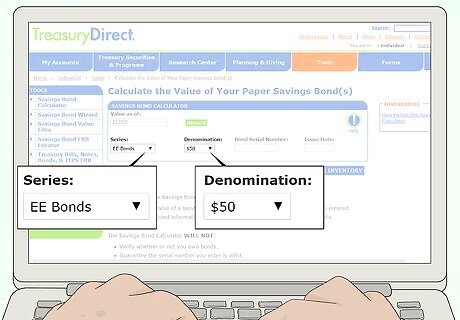
Enter the bond’s information to calculate the value. Select today’s date and then open the dropdown menu to select the type of bond you’re checking (I bond or EE bond). Select the denomination ($50, $100, etc.) and then enter the bond’s serial number, which is the big number in the bottom righthand corner of the bond. Finally, enter the issuance date (MM/YYYY), which you can find underneath the series in the top right. Hit “calculate” to determine the bond’s current value as of today. Don’t confuse the issue date for the print date, which is another date located in the center of the bond on the right. If you’re checking the value of multiple bonds, you can make an inventory by following Treasury Direct’s instructions here.
Electronic Bonds
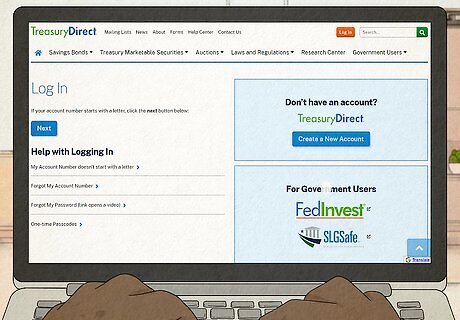
Log in to your Treasury Direct account to check your electronic bonds. You bought your electronic bonds on Treasury Direct, which is where you can check their value. Log in and select “Manage Bonds” from the drop-down menu on the left. Each bond’s value will be displayed in your account. You can buy and sell municipal bonds and company bonds with a brokerage account, and you can buy/sell treasury bonds (aka T-notes) at a brokerage, but you cannot hold savings bonds anywhere other than Treasury Direct. If you cannot open your account, click “forgot your account number” or “forgot your password” and follow the instructions to reset your account. If you do not have a Treasury Direct account, you do not own any electronic savings bonds unless they were gifted to you. You’ll get an email with a link to your account if the bonds are a gift.
Cashing Bonds

Take an old, matured paper bond to the bank to cash it. Any bank you use will cash your savings bond for you. Contact your bank by phone and ask them what you need to bring with you to cash the bond out. Bring the bond into the branch with your ID and any other requested info. Hand it over to the teller to cash it. This is ideal for matured bonds, which are bonds that have already produced the maximum amount of interest. If you bond is still in the process of maturing, you might not want to cash it yet! You can fill out FS Form 1522 and mail the bond to the federal government (using the address on the form) to cash it if you prefer. It’s much faster and easier to go to a bank, though.
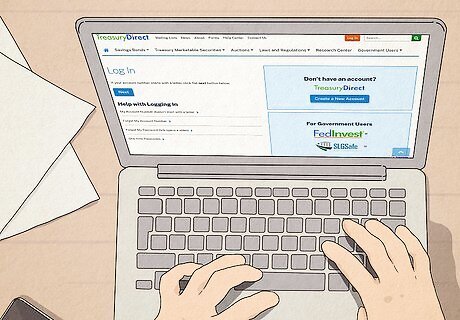
You can sell electronic bonds early on Treasury Direct. If you would like to cash your electronic bond in early before it has fully matured, go to the “current holdings” menu and go to “Manage Direct.” Follow the link at the bottom to cash out your electronic bond. Matured electronic bonds are automatically paid out. Once electronic bonds fully mature (30 years after the issue date), the money will be deposited into your Treasury Direct account. If you sell EE or I bonds before they’re at least 5 years old, you will forfeit 3 months interest. For example, if you held the bond for 22 months and you sell early, you will only receive 19 months of interest. You must hold EE and I bonds for at least 1 year before you can cash them out.
Should I cash in my bonds early?

No, if you don’t have any need for the money right now. Savings bonds are among the most stable investments out there, and if your bonds are still maturing, there’s no reason to give away the free interest. The interest on savings bonds compounds as well, which means that the interest grows exponentially as it’s added to your principal (what you paid). As such, the last few years of a bond’s term are always the most profitable! If you do not have a compelling reason to sell your bonds early, just wait until they mature.

Yes, if you need the money right now. You will get the face value of your bond back when you sell, plus whatever interest you’ve accumulated. If the bond is less than 5 years old, you’ll give up 3 months of interest, but you’re still coming out ahead! It’s usually preferable to sell a bond early than it is to go into debt or take some other financial risk, so go ahead and sell your bond if you need to. If your choice comes down to dipping into savings versus selling a bond, check the interest rate in your savings account. If you’re earning more there, sell the bond. If the bond’s rate is better, dip into savings.
Types of Savings Bonds

EE bonds (aka “patriot bonds”) EE bonds are designed to double their face value over 20 years, although they’ll continue to accrue interest for an additional 10 years. EE bonds pay interest monthly and compound that interest every 6 months. They earn a fixed interest rate depending on when you bought them. The “face value” of a bond refers to the amount it was purchased for originally. The interest of an EE bond depends on entirely on when it was bought. All EE bonds mature 30 years after their issue date. Patriot bonds are identical to EE bonds. The name “patriot bond” was used for EE bonds from 2001 to 2011. You can only buy $10,000 worth of EE bonds annually.

I bonds I bonds are designed to protect your money against inflation, which occurs when the buying power of the dollar decreases. Like EE bonds, I bonds collect interest monthly and that interest compounds every 6 months. However, the interest rate for I bonds changes every 6 months depending on the rate of inflation. For example, as of October 2022, the interest rate I bonds is 9.62%. If inflation goes down the next 6 months, that rate will fall. If inflation goes up, that rate will rise. All I bonds fully mature 30 years after their issue date. Like EE bonds, you can only buy $10,000 worth of I bonds annually.
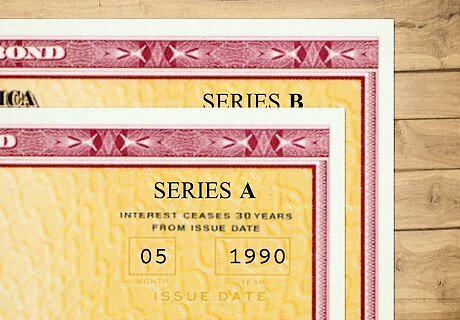
Discontinued paper bonds While the government only offers EE and I bonds today, you may have a paper bond with a different letter on it. Note that if you have a bond with A, B, C, D, E, F, G, H, J, or K on it, your bond has fully matured and is no longer earning interest. The one exception is HH bonds. You can’t buy them anymore, but the last round of HH bonds stop maturing in 2024. They are identical to EE bonds, except they all collect 1.5% in interest. The government stopped printing paper bonds in 2011.




















Comments
0 comment